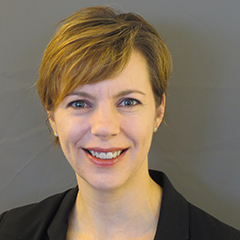With the release of the Ensuring Access to Medicaid Services final rule from the Centers for Medicare & Medicaid Services in April 2024, state Medicaid programs are considering strategies to monitor and improve the timeliness and quality of care in home and community-based services (HCBS) programs. The Money Follows the Person (MFP) Demonstration, established in 2005, has long been a source of flexible funding for states to develop and test the processes, tools, and infrastructure they need to reform the long-term services and supports (LTSS) system and transition people who wish to receive services in the community. The MFP Demonstration recently had a resurgence in funding, and Mathematica’s second evaluation of the demonstration revealed states’ successes in the recently released Report to Congress on best practices.
Key findings from the report provide a road map for states looking to adopt new practices and learn from other states’ innovations in four key areas: (1) supporting successful transitions to the community, (2) elevating participants’ voices in person-centered planning, (3) providing financial incentives to support positive outcomes under managed care delivery models, and (4) investing in resources to understand and address health disparities.
"Any way to be at home is the best. This program has given us a second chance.”
– MFP participant
Invest in behavioral supports to aid in the transitions of people with intellectual and developmental disabilities
From the time MFP transitions began in 2008 to the end of 2020, states with MFP programs had transitioned 107,128 participants from institutional to community living. MFP participants need diverse types of HCBS, and MFP programs used the flexibility their grant funding allowed to tailor the types of services they provided. People with intellectual or developmental disabilities (I/DD) require different services than older adults or people with physical disabilities. For example, people with I/DD are more likely to benefit from positive behavioral supports, but mental health providers might have limited experience working with this population.
States used flexible MFP grant funds to address gaps in specialized behavioral services for people with I/DD transitioning to the community. New York used MFP funds to launch Crisis Services for individuals with I/DD, which provided immediate stabilization for participants with acute behavioral needs. New Jersey established clinically trained resource teams for participants with I/DD, which provide wraparound supports and build providers’ capacity to support participants’ well-being. Iowa hired a dedicated behavior specialist to deliver trainings to providers statewide on de-escalation techniques and positive behavioral supports.
“A lot of the things we need in life, you don't realize how important those things are until you don't have them or don't have the finances to get them. Every little thing I asked for, [my transition coordinator] would help me with. And it meant so much.”
– MFP participant
Train staff on relationship building and strengthening participants’ agency and voice
The MFP demonstration, which required person-centered planning since its initial legislation in 2005, can provide lessons for states responding to the new access rule’s requirement for more oversight on person-centered planning. Across states, MFP transition staff observed that participants might be unaccustomed to asserting their voices after being in the structured environment of a nursing facility or other institution. MFP states found it valuable to invest in trainings that build skills and capacity for person-centered practices that help participants remain active in person-centered planning discussions. For example, North Carolina hosts an annual intensive training called the Community Transition Institute for professionals that uses collaborative communication techniques inspired by motivational interviewing during transition-specific contexts. MFP states identified three best practices to help participants strengthen their voice:
- Hold unstructured relationship-building conversations with participants at the outset of service planning to build trust and genuine understanding.
- Create space for participants’ voices by redirecting the focus of planning meetings back to the participant if family members or other staff are speaking on their behalf, and identify the most comfortable setting for meetings, which might be face-to-face instead of virtual.
- Strategically assign MFP participants responsibilities that not only improve their engagement in decision-making but also help transition staff assess participants’ motivation and barriers to independent living.
“At first, I didn't have certain preferences. [My transition specialist] asked me about furniture preferences and the paint colors that I would like… [She] gave me a home.”
– MFP participant
Use financial incentives to support positive outcomes under managed care delivery models
State Medicaid agencies have several options to give managed care plans financial incentives to achieve performance targets, including using blended capitation payment rates for LTSS benefits, which covers the cost of all LTSS benefits regardless of whether they are delivered in an institutional setting or the community. New Jersey has used blended rates since 2016, and Medicaid officials in the state said that their blended rates have contributed to a trend toward greater use of less-costly HCBS over time. Other financial incentives include one-time payments or rewards based on identified performance goals. For example, Wisconsin provides a $1,000 one-time payment to the managed care plan for each eligible MFP transition, and one person interviewed said that the incentive contributed to the state exceeding its annual transition goals.
Improve data infrastructure and analytics to better understand health disparities and inform interventions
The access rule requires states to report data stratified by race, ethnicity, rural versus urban status, disability, language, and other factors to help measure health disparities and advance health equity. A few MFP states reported investing in data infrastructure improvements to identify disparities at a broader programmatic level (for example, for all HCBS waivers) within state Medicaid programs. Rhode Island used the Minimum Data Set Resident Assessment Instrument, which contains information on all nursing facility residents, to supplement race and ethnicity data received through MFP program referrals to better understand whether the MFP program serves the intended population. Minnesota maintains a public dashboard with demographic data, including language, race, and age of LTSS users receiving HBCS and LTSS and a dashboard of LTSS performance measures that users can sort by race, ethnicity, and age. Finally, the District of Columbia has established a data-sharing partnership with the Department of Behavioral Health to identify nursing facility residents without a permanent address who had received Department of Behavioral Health services in the community. This enabled the District to target and tailor HCBS to people in insecure housing situations.
“MFP is really about supporting marginalized populations, period. That’s why we exist.”
– MFP project director
These lessons, along with other findings on best practices from the MFP Report to Congress, provide states with a broad range of policies and procedures that might be helpful as they respond to new requirements from the access rule and continue to provide services that allow people to experience the full benefit of community living.






